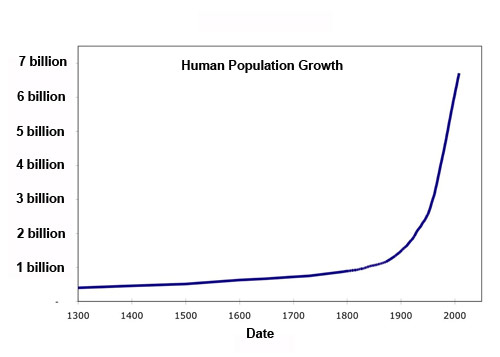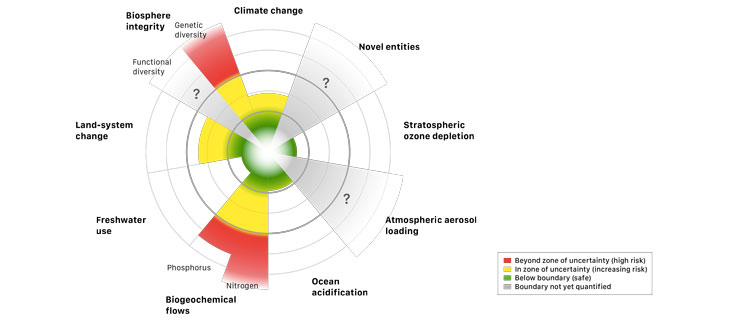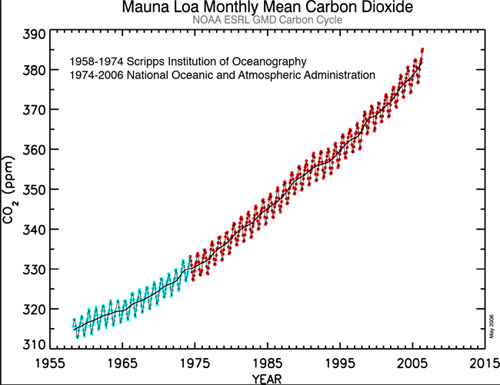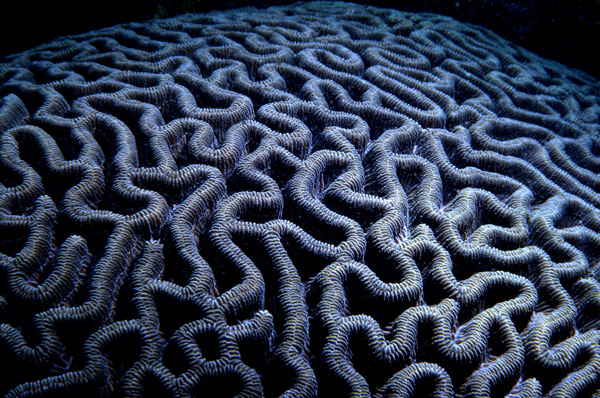I am intrigued by the notion that there is a limit to what we as humans can perceive about the universe.
Consider our dimensional space. The first dimension can be thought of as a line with no other features. The second dimension is perpendicular to the first and it also can be described as a single line, but by combining the first and second dimensions we get a plane, any point on which can be described with 2 numbers (x,y). By adding a third dimension at right angles to the first two, and combining all three, we get a cube-shaped space, in which the location of any point can be described with three numbers (x,y,z). We conceive of the universe as having three spatial dimensions and one time dimension. We can feel in three dimensions, but we only see in two dimensions and our brain deduces the third dimension visually by using other clues such as relative size, motion, juxtaposition of three dimensional objects etc. If we could actually see in three dimensions we would be able to see around and through objects, just as we can feel around and through objects.
To illustrate the difference between “seeing” in two dimensions and “feeling” in three dimensions, hold up an an empty mug. You cannot see the back of the mug and you cannot see the inside of the mug. You can only see one “plane” of the mug (even though your brain knows it is a three-dimensional object). Now take your free hand and explore the back of the mug (no peeking), the bottom of the mug, and the inside of the mug. With your hand you actually directly sense all three dimensions and you can describe the object’s shape fully. If someone had played a trick on you and given you a mug that was different on each side, your hand would detect the trick but your eyes would not. Next, tilt the mug towards you so the “plane” of observation allows you to see inside the mug. By doing this from many different planar angles, you end up with a very good “conceptual” three-dimensional idea of what the mug is like, but you did it by integrating a series of two dimensional plane views. One more quick example; your eyes are fooled by a good representational painting – seeming to see three dimensions. Running your fingers over the painting will, however, reveal the trick of the eye, and correctly determine that the painting is in fact a flat plane.
Suppose the universe is actually four dimensional but we are only living in, or at least only aware of, three of those dimensions. There is no mathematical reason why there cannot be a fourth spatial dimension and the location of any point within that space would be defined as (x,y,z,a). We at present have no way to see or feel along that fourth dimension. To understand the idea, imagine we lived in a two-dimensional space – a plane. The plane is the limit of our perception, up down and sideways, but not depth. Now imagine a small three-dimensional object astride our plane of existence and perception. We can see one slice of the object. If it moves along the third dimension, we will see new slices of the object until it no longer crosses our plane of existence and disappears from view. It might remain quite close to us but just off our two-dimensional plane and we would never know it was there.
Now let’s suppose we actually live in a three-dimensional space (as opposed to a two-dimensional plane) but that a fourth dimension exists. Now imagine a small four-dimensional object crosses our cube-shaped space of perception and existence. We can perceive only the three-dimensional part of the four-dimensional object. If it moves along the fourth dimension, we will see new three-dimensional parts of the object until it no longer crosses our cube-shaped space of existence and disappears from view. It might remain quite close to us but just off our three-dimensional cube-shaped space and we would never know it was there. Now we can also play tricks if we knew there was a two-dimensional organism. We could choose to wink in and out of the perception of that two-dimensional organism just by shifting position along the third dimension (the depth dimension) perpendicular to the plane until none of our three-dimensional parts cross the plane.
Let’s further suppose that our universe really does have four spatial dimensions. What if two independent origins of life began on our earth – one a three-dimensional chemical process and the other a four-dimensional chemical process? We, as three-dimensional organisms will only interact with the four-dimensional organisms when they are in a position on the fourth dimension that crosses our cube of existence. They might look quite ordinary in three dimensions, or they might be quite different. But whatever their appearance, they would (or could) wink in and out of our perception as they moved along their fourth dimension. What might their evolution have been like? Would it have been a parallel evolution to our own – or perhaps not quite the same, but close, except that they have this extra dimension to their actual shape?
Speculative science (fiction?) might allow us to imagine that there are four-dimensional micro-organisms, equally wild ancient types like 4-D trilobites and huge 4-D trap-jaw fish. Perhaps as 4-D evolution proceeded many of the so-called mythical beasts were not so mythical. The bible for example mentions the Behemoth, the unicorn (nine times), the cockatrice (a rooster-headed dragon), Lilith (a female demon), and satyrs (half-man, half-goat creatures). Abaddon’s locusts resemble war horses, have the stinging tails of scorpions, the faces of men, long hair like a woman’s, and wear crowns of gold and armored breastplates. Their scorpion’s tails are used to sting their victims, an experience that’s apparently so painful that ‘men shall seek death, and shall not find it.’ The 200 million horsemen whose horses have the heads of lions, tails like serpents, and spit smoke, fire, and brimstone out of their mouths, are eventually responsible for the deaths of a third of all mankind. There are lots of references to dragons and angels, and of course, the ultimate Leviathan. Almost all of these beasts and angels are immune to human weapons (slipping in and out of the fourth dimension?). Similar stories abound in almost all legends from around the world. Many such beliefs (real or imagined) are current today: fairies, sprites, pixies, elves, imps, brownies, pucks, and leprechauns. Are they actually 4-D sprites? And what about 4-D aliens who can wink in and out of existence, even taking our three-dimensional bodies with them for experimentation before returning them alive to our three-dimensional world!
There are times when I think I must set my pen or my glasses down on a spot that moves in and out of the fourth dimension, I’m sure it can’t be that I am forgetful.
How about some other ideas. My assumption (may not be true) is that the time dimension is common to all dimensions. Suppose however that time is also multidimensional and we experience only the first dimension of time. In an exact parallel to a single spatial dimension we only know time as forwards (or theoretically) backwards. Imagine a second time dimension so that “time” would be a plane and time would have two coordinates, not just one as it does now. This would allow experiencing time in one direction while not experiencing time in the other direction (I imagine myself stepping away from the office at ten o’clock, and moving along the perpendicular time-line to enjoy the sunshine. Then after an hour in that dimension, I step back into the office at the same time I left in the other time dimension. And with some fear that my brain will break, we could imagine a three-dimensional time-frame in which any point of time would require three numbers (t1, t2, t3) to determine what time it is.
It is not very useful scientifically to suggest a theoretical reality that cannot be tested. Fortunately there is a test to determine if our a universe has four spatial and one time dimension. The current theory (Einstein’s General Theory of Relativity) predicts only three spatial and one time dimension. However, the development of string theory, which has morphed into superstring then into M or membrane theory of the universe (popularly known as braneworld) is helpful. This theory requires at least four spatial dimensions and one time dimension. In a three dimensional universe, black holes would lose enough energy so that only large black holes would remain at this time in our cosmological history. By contrast in the braneworld of four or more dimensions, very small black holes should exist. If mini-black holes are detected this would confirm the existence of a fourth spatial dimension and as a corollary, the existence of multiple universes. Those tests are currently underway using the Large Hadron Collider. None have yet been detected, so at least for now we can’t say for certain if there is a fourth dimension or not.
Charles R. Keeton of Rutgers and Arlie O. Petters of Duke base their work on a recent theory called the type II Randall-Sundrum braneworld gravity model. The theory holds that the visible universe is a membrane (hence “braneworld”) embedded within a larger universe, much like a strand of filmy seaweed floating in the ocean. The “braneworld universe” has five dimensions — four spatial dimensions plus time — compared with the four dimensions — three spatial, plus time — laid out in the General Theory of Relativity.
Just to make things a little more complicated, M theory (braneworld) predicts 10 spatial dimensions and one time dimension. Now that is mind-boggling!





